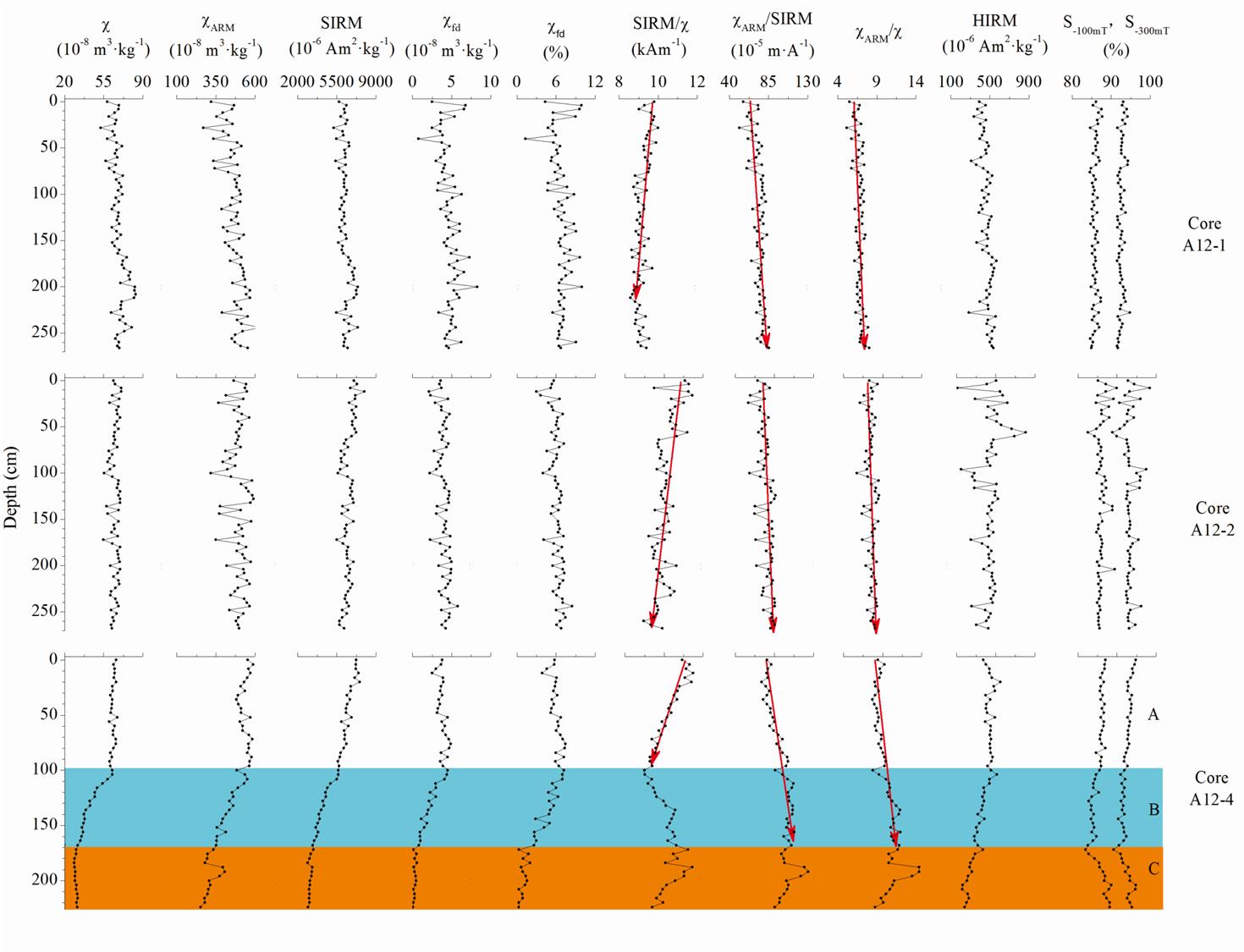Magnetic mineral diagenesis in the river-dominated inner shelf of the East China Sea, China
The inner shelf of the East China Sea is a river-dominated margin characterized by fine-grained mud deposits and a rapid sedimentation rate. Three short sediment cores (~2.7m in length) were examined to characterize spatial variations in magnetic mineral diagenesis. The sediment cores were analyzed for sedimentation rates, magnetic properties, particle size distribution, organic carbon, and total sulfur content. The two more proximal cores with higher sedimentation rates (~2.2 cm/yr and ~0.96 cm/yr) do not exhibit obvious effects of reductive dissolution of magnetite with increasing depth, which is consistent with their lower total sulfur content. The offshore core, A12-4, which has a lower sedimentation rate, contains clear evidence of magnetite dissolution and increasing total sulfur content with depth. The three cores have a similar sediment source and organic matter input; therefore, we suggest that a higher sedimentation rate will lead to less reductive diagenesis of magnetite, assuming that other factors are constant. The iron- to sulfate-reduction boundary, i.e., revealed by the onset of a rapid decline of magnetic susceptibility, is located 1.0m below seafloor in core A12-4. This is much deeper than is reported in many other coastal marine environments and can be explained by the higher sedimentation rate, the presence of refractory terrestrial organic matter, and an abundant input of detrital iron oxides. This study demonstrates that analyses of the magnetic mineral zonation provide a straightforward approach to assess diagenetic organic carbon decomposition pathways in marine environments.
Figure 1. Downcore variations of magnetic properties for cores A12-1, A12-2, and A12-4.
List of relate results:
-
Journal of Geophysical Research: Solid Earth ,
2015 ,
120
: 4720-4733

